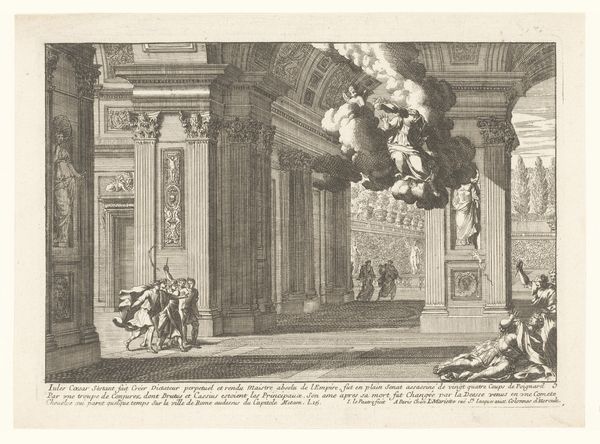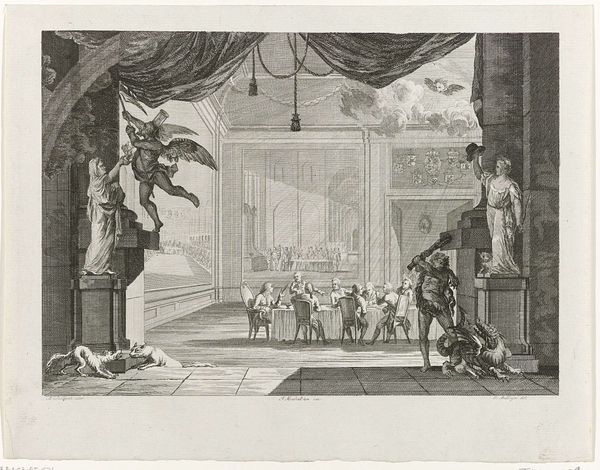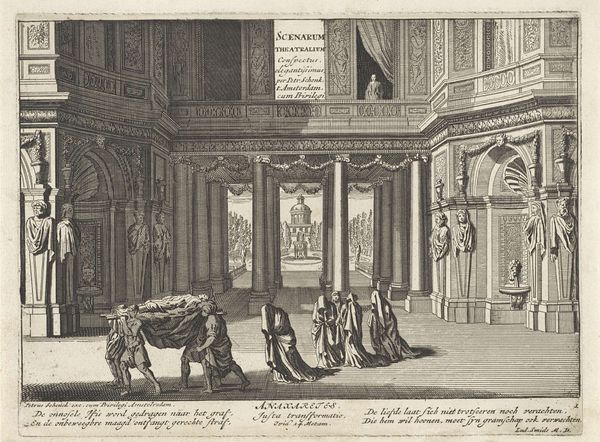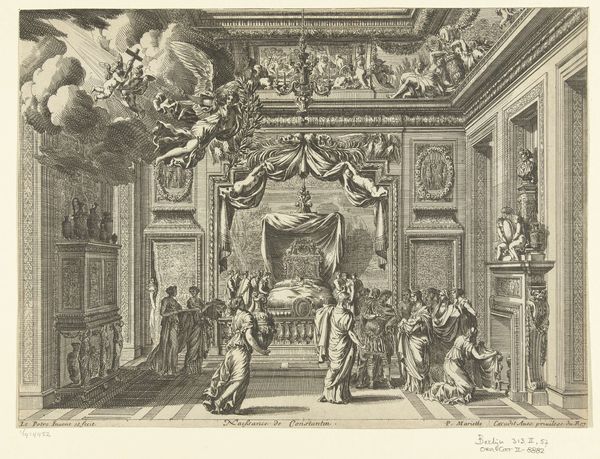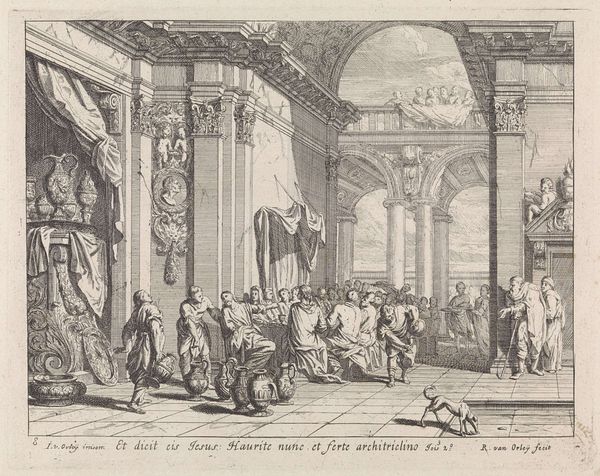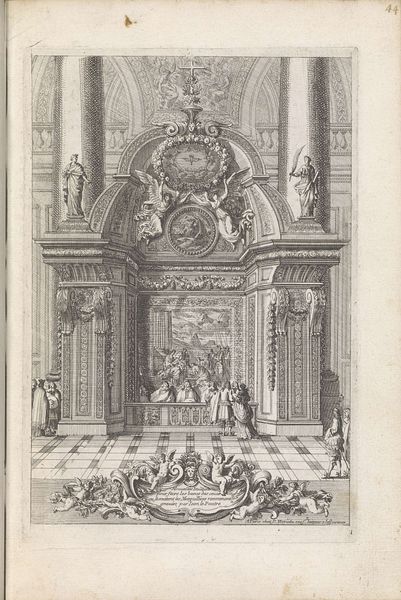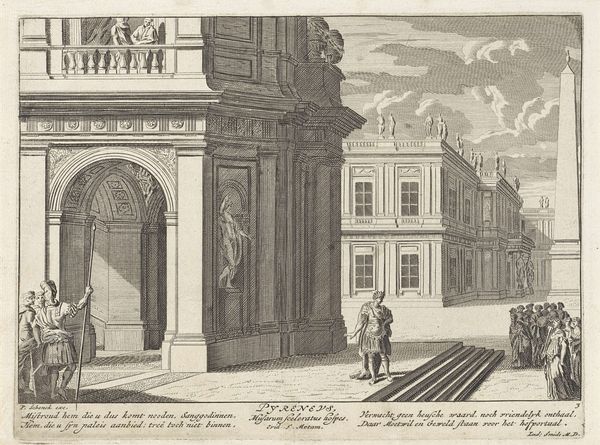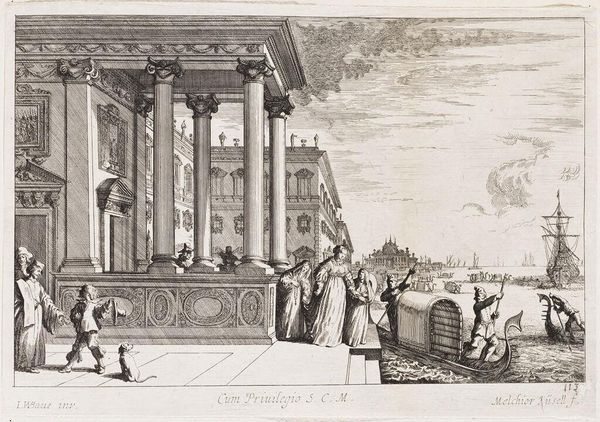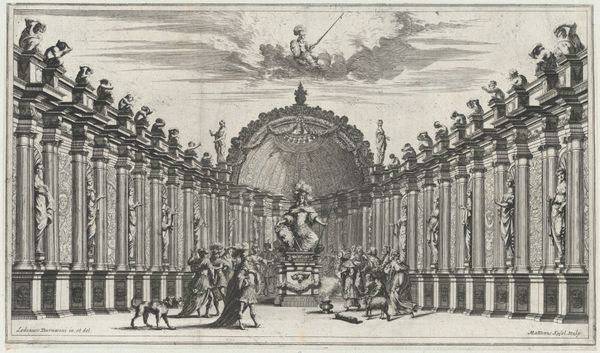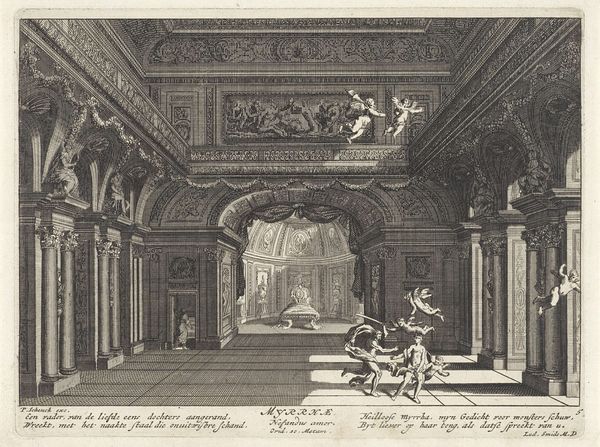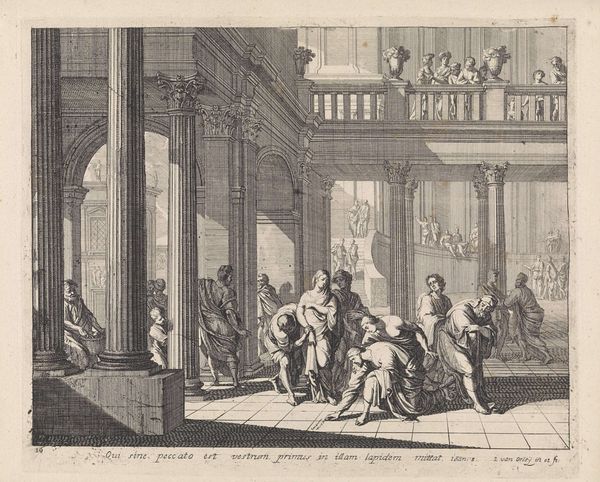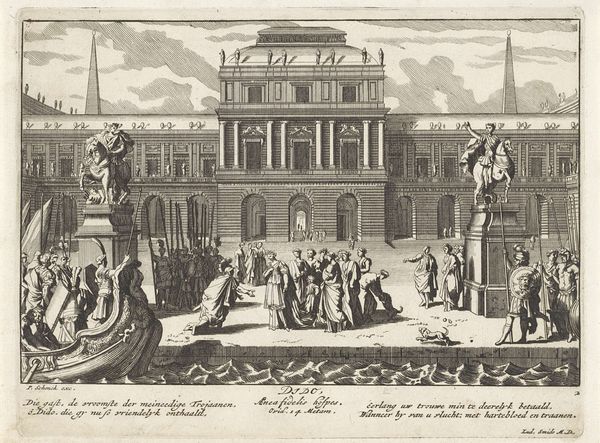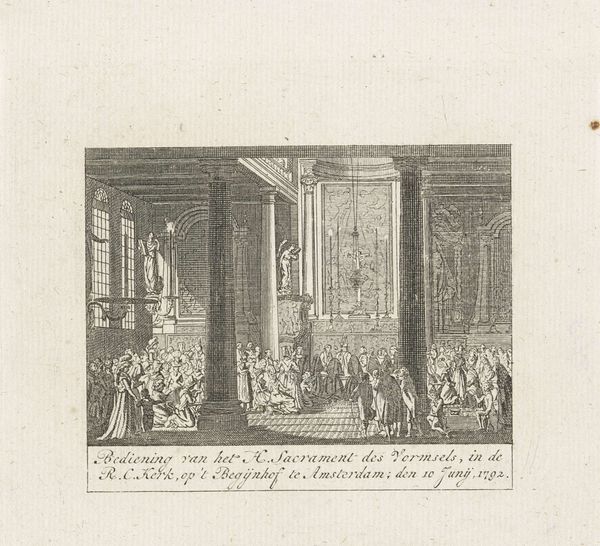
engraving
#
baroque
#
old engraving style
#
perspective
#
figuration
#
line
#
history-painting
#
engraving
Dimensions: height 166 mm, width 223 mm
Copyright: Rijks Museum: Open Domain
Curator: Standing before us is an engraving titled "Dood van Julius Caesar," or "Death of Julius Caesar," dating from between 1675 and 1711. It is currently part of the Rijksmuseum's collection. Editor: Woah, it’s… theatrical! You've got the body slumped dramatically stage right, conspirators clustered stage left, and angels swirling up to the heavens at center. It feels like a play condensed into a single, chaotic frame. Is that perspective tricking my eyes, or are things… skewed? Curator: Indeed. This anonymous piece employs the conventions of Baroque art to illustrate a pivotal moment in Roman history. Look at the grand architectural setting, designed to enhance the drama through visual perspective. But as the Artist in you has noted, its not the accurate scientific form we might expect today. The emphasis is the use of depth to give the impression of a grand, almost filmic space, perfect for moral stories about power. Editor: Moral story, right. The "beware of friends" trope brought to life in swirling lines. Tell me more about those lines – this feels less… polished than some Baroque pieces I’ve seen. Raw, almost? Curator: This rawness is partly inherent to the engraving medium. The image is made of nothing but line. Instead of working on tonal effects in painting or through sculpture, the printmaker must use only the effect of the drawn line and its placement. The hatching creates light and shadow, but as you suggest there’s a blunt directness to the marks, fitting perhaps for the brutal narrative on display. Its use makes the theatrical feel you noticed even stronger! Editor: It also puts a little bit of space between us and the event. If this was photo-realistic painting, it would be…horrific. This distance somehow invites a cooler more detached, kind of thoughtful interpretation of it. Curator: Absolutely. The print, as a reproducible medium, would have circulated widely, prompting viewers to consider the ramifications of Caesar’s assassination in broad societal terms. This contrasts sharply with how contemporary sources of history or art acted; today people have immediacy to such occasions while those removed would only have had works like these to tell tales from far flung corners. Editor: So, less about immediate grief and more about historical analysis through dramatic form? It's a stylishly detached dissection of a fatal political miscalculation. Curator: Precisely. And I suppose we too are offering another detached dissection, using two separate, unique methods as well. Editor: True, almost another layer, as always... Always a little bit extra from me.
Comments
No comments
Be the first to comment and join the conversation on the ultimate creative platform.
